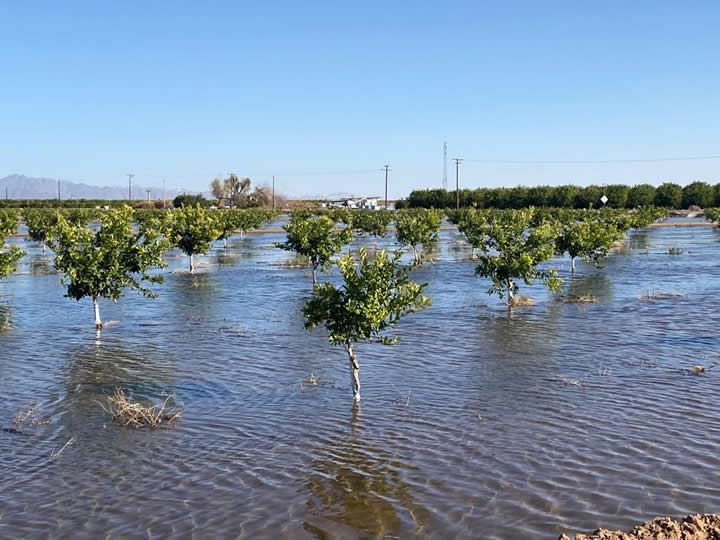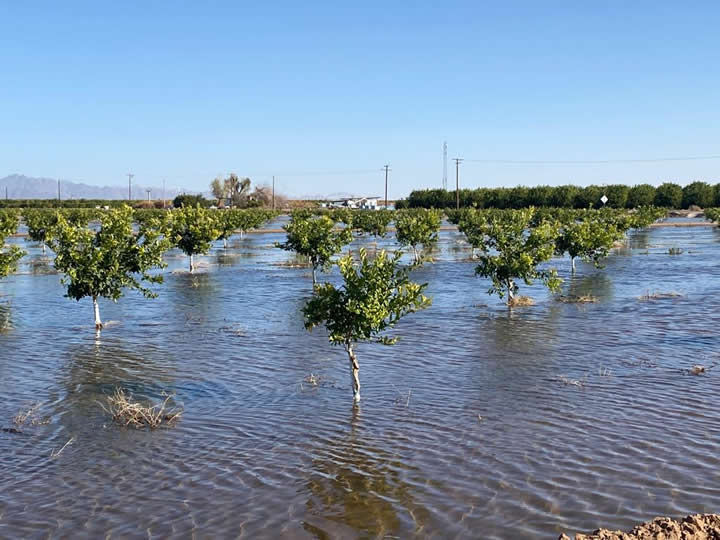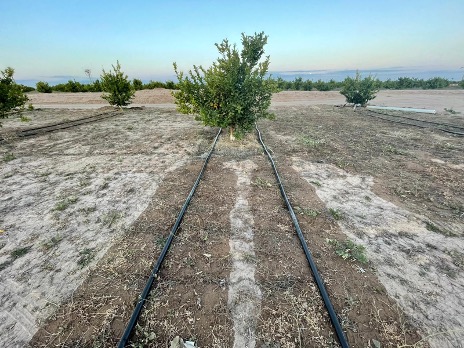The irrigation market has seen too few innovations that would enable growers to combat dwindling water supplies with efficient, sustainable, and cost-effective irrigation.
 Revolutionizing Agriculture: Innovative Irrigation Solutions for a Sustainable Water Future
Revolutionizing Agriculture: Innovative Irrigation Solutions for a Sustainable Water Future

Seth M. Siegel, Chief Sustainability Officer | N-Drip
Water is essential for agriculture, and the industry remains the largest consumer of water globally. Growing the world’s food and fiber accounts for approximately 70 percent of global freshwater use each year.
As climate change and population increase both cause water stress, farms across the US feel the ripple effect of this growing water scarcity with crop yields declining from too little rainfall. Growers urgently need practical and economical ways to conserve and manage their water resources.
The irrigation market has seen too few innovations that would enable growers to combat dwindling water supplies with efficient, sustainable, and cost-effective irrigation. However, given the recent escalation of the water crisis and growing risk of global food insecurity, a few technologies – some old, some new – are getting attention.
The Current State of Agriculture and Water Scarcity: Flood Irrigation Reigns Supreme
Around the globe, 85 percent of all irrigated fields – 600 million acres – use flood irrigation, a method first developed 5,000 years ago, in which fields are repeatedly flooded. The method routinely results in about half of the water being lost to evaporation. In the US, more than 20 million acres are flood irrigated, with more than five million acres being flooded in the water-scarce Colorado River states of the southwest. In Arizona alone, 89 percent of all agriculture – 830,000 acres – uses flood irrigation.

Figure 1: Flood-irrigated citrus farm in Yuma, AZ
Modern Irrigation Methods For A Water-Scarce World
Precision irrigation, or techniques that allow growers to apply water and nutrients at the right time, place, and rate, have been instrumental in improving water use efficiency in agriculture. Examples of precision irrigation technologies include center pivot, pressurized drip, and gravity-powered micro-irrigation, all offering water savings and the potential to improve yield.
A short review of each:
Center Pivot Irrigation: Center pivot irrigation systems are large, mobile sprinklers that rotate around a pivot on a field. The sprinklers allow for a more efficient and uniform water and nutrient application compared to traditional flood irrigation. Advancements in center pivot technology, including automation, have helped lower labor costs while enabling a degree of water uniformity and more accessible chemical application. Given these advantages compared to flood irrigation, more than 30 million acres in the US are irrigated with this sprinkler technology. However, because the systems are very expensive and require both a high initial capital outlay and high ongoing energy costs to run the system, center pivot is still only installed in about 12 percent of irrigated agriculture globally.
Pressurized Drip Irrigation: Another alternative to flood irrigation is pressurized drip irrigation. Pressurized drip irrigation delivers water through plastic tubing that contains small emitters which apply drops of water directly to the root zones of plants, supplying only the necessary amount of water for optimal plant growth. This targeted approach conserves water resources and increases precision and efficiency, but requires a lot of energy to filter the water and to then move the water across the field. Because of the high initial capital investment and ongoing energy and maintenance costs, farmers generally only use pressurized drip irrigation on high-value crops, such as wine grapes, tree nuts, and avocados. Pressurized drip irrigation is only installed on three percent of global irrigated farmland.
Gravity-Powered Micro Irrigation: For the last 65 years, center pivot and pressurized drip irrigation were the only technologies available to help farmers become more water-efficient. Recently, the AgriTech space has been growing to address this innovation gap and technologies, such as gravity-powered micro-irrigation, have demonstrated a revolutionary ability to address the water scarcity challenge. Gravity-powered micro-irrigation systems, utilizing only the gravity-powered infrastructure of a flood irrigated field, apply water through drip irrigation tubing – achieving the same benefits of pressurized drip irrigation without the high capital and ongoing costs associated with pumps and filters. This system saves half of all water currently used in flood-irrigated fields, increases crop yields, cuts polluting fertilizer use by half, and is price effective even for commodity crops, including corn, cotton, alfalfa, potatoes, sugar cane, and rice. It has also been shown to significantly reduce greenhouse gasses found in abundance in agriculture, including carbon and methane.

Figure 2: N-Drip irrigated citrus farm in Yuma, AZ
Irrigation Innovation Can Help Solve the Water Crisis
Depleting water resources, increased demand for food, and rising costs are challenges the agriculture sector faces as droughts and water scarcity persist. Adopting modern precision irrigation systems is critical to future-proofing agriculture against these headwinds and helping growers achieve operational efficiency, profitability, and resilience.
The content & opinions in this article are the author’s and do not necessarily represent the views of AgriTechTomorrow
Comments (0)
This post does not have any comments. Be the first to leave a comment below.
Featured Product

